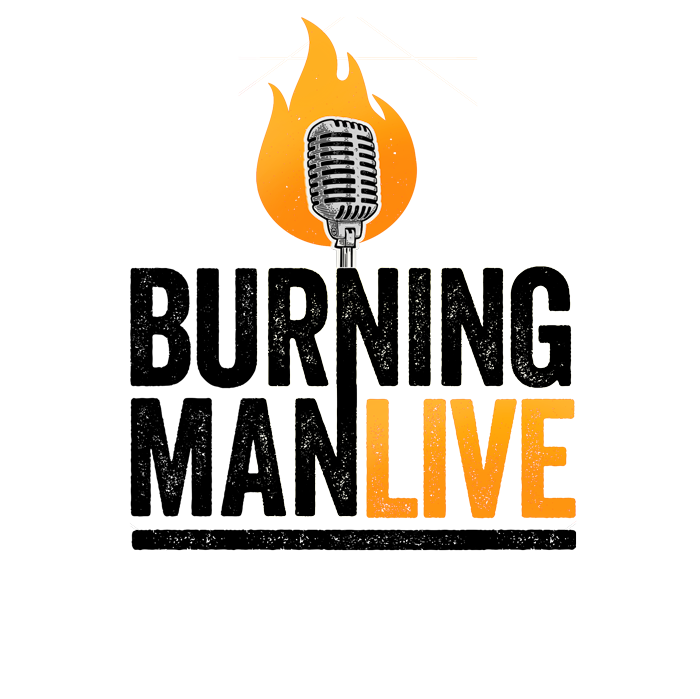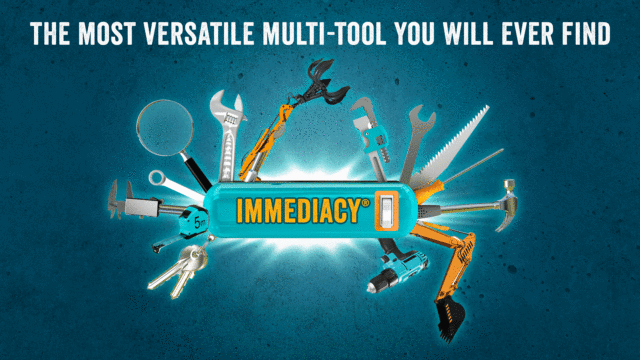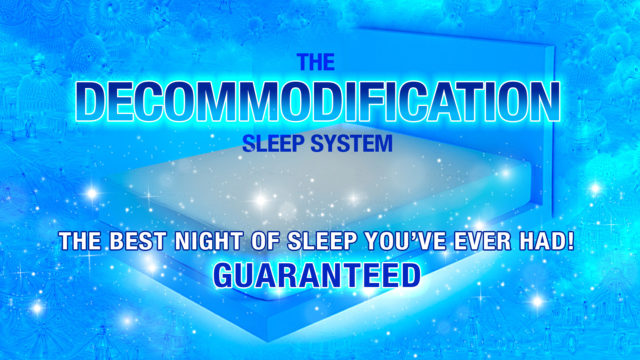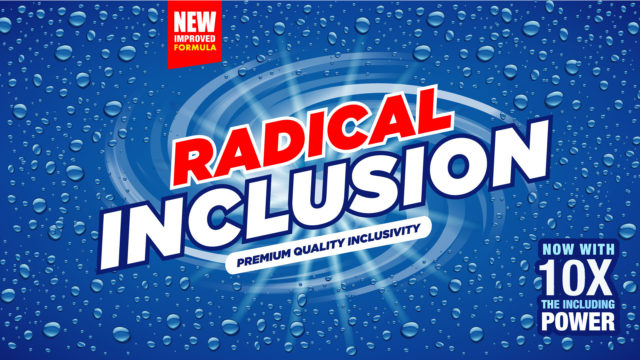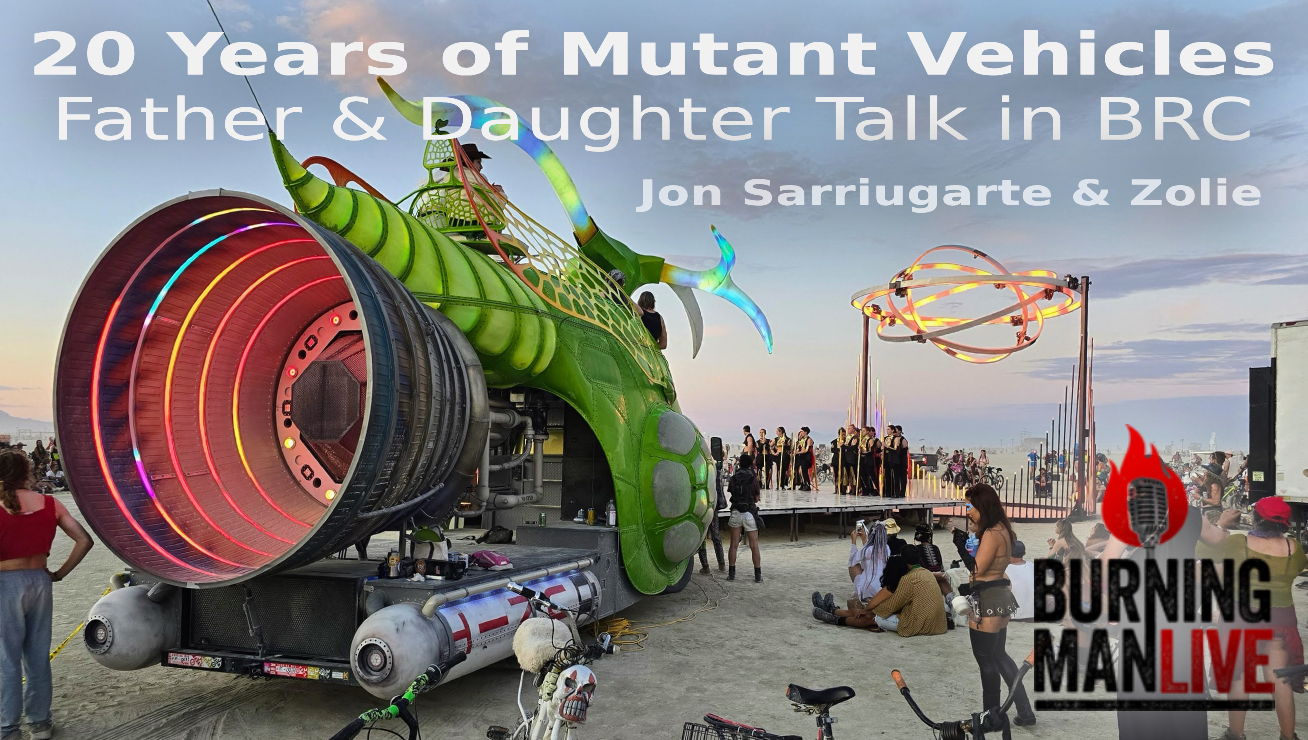
20 Years of Mutant Vehicles – Jon Sarriugarte & Zolie
Recorded in Black Rock City, you can hear the grainy gravitas of their voices…
For decades now, Jon Sarriugarte, Kyrsten Mate, their daughter and their team build mobile art.
From a meter maid cart turned space shuttle, to a custom copper retro fire snail on wheels, their creations make up part of BRC’s moving landscape. They built a trilobite to ride, a gilded golden zeppelin car, and a noir submarine buggy.
Then there are the Serpent Twins. Back in 2011, when the playa glowed with now outdated EL wire, these 50-foot long slithering dragons rippled with color from a touch of their LED skin.
What about this green insect rocket?
Project: EMPIRE returned to BRC with more sights, sounds, and stories. It’s a NASA spaceship and a giant bug, a bewildering blend of art, engineering, and a delightfully conspiratorial backstory…
On playa we tracked down Jon and his daughter Zolie who has been Burning her entire life. They shared stories of the absurd early days, and the adventure of navigating the desert in a two-ton masterpiece.
We talked about bringing radical self-reliance to the default world, and the mechanics of a legacy built, piece by painstaking piece, in the name of art.
Transcript
ZOLIE:
Radical Self-reliance carried into the real world.
JON:
Yeah. I’m looking for the inspiration to another generation of people, and that can be in the art world, and it can be using that information to grow our level of science, to have this level of interactivity and boundary pushing. How can we create this closer to home and more often, and without as much pressure washing afterwards?
STUART:
Hola mis amigos invisibles, my IFs, invisible friends. Stuart here, just back from Black Rock City. I just got the dust out of my ears. And, boy, have I brought back some goodies for you; cultural treasures like… Remember when Smithsonian Folkways used to do those like wax cylinders or wire recordings of folk art out there, music, lost languages? It’s kind of that epic level, but from the not quite yet lost city of Black Rock out in the desert.
I had so much fun this year collecting amazing stories, talking to super fun people.
Now I know what some of you are saying: Stuart doesn’t work out there. Stuart just spends Burning Man in his luxury RV, drinking 30 year old whiskey and maybe trolling Reddit on his Starlink. Super not true. I do not have Starlink. I’m on staff Wi-Fi just like all the other working stiffs out there.
Anyway, this year, thanks to some support from my amazing friends on the podcast team and Burning Man Communications staff, we had interviews every day of event week. I’d get in my little cart, rumble over to BMIR, Burning Man Information Radio, and sit down in the webcast trailer. Big shout out to the webcast crew. Thank you Motorbike Matt, thank you all of y’all who would take our little interviews and push them out live through the wires and the invisible ethers and all that out to… apparently a lot of people were listening. They turned on that webcast, and they’re looking at a big picture of a Black Rock City, and suddenly people start talking.
Well, if you were not one of those lucky nerds who heard it in real time (live, as we say on Burning Man Live), rest easy. We brought them all back, and we’re going to put them out through this channel over the next couple of months.
I love them all. They’re all my favorites. But this one is pretty awesome because if there are two things I love in this job, it’s getting to talk to old time Burning Man artists who’ve been around as long as I’ve been around, and have seen the thing change and grow; and to young Burners who’ve grown up out here. This is one of those — BOTH of those!
I had a chance to speak with Jon Sarriugarte who has been bringing art and mutant vehicles, and basically being a troublemaker at Burning Man about as long as I have; and his amazing daughter Zolie, who has grown up in this world.
And, I don’t know, I’m just going to go let this thing roll, because it’s about art; it’s about family; it’s about Burning Man; it’s about their amazing project this year, the Empire. And, yeah…
Roll it, Vav!
VAV:
Are we ready?
JON:
Yes.
VAV:
…to go live?
STUART:
Check.
VAV:
Alright.
JON:
Mate.
STUART:
Hey everybody it is Burning Man LIVE, actually live for a change, from the middle of the Black Rock Desert from Black Rock City 2025. I’m Stuart Mangrum, and I’m here today with a couple of amazing artists, fabricators, provocateurs, trouble makers and storytellers. I’ve got Jon Sarriugarte and his daughter, Zolie.
JON:
Hello. Welcome. Yeah. Thanks. We feel alive after all that.
STUART:
Well. It’s true. I think nobody can come to this town more than once and not see one of your amazing mutant vehicles.
JON:
Oh, thanks.
STUART:
They’re pretty legendary. But first of all, what is Empire of Dirt? Is it a camp? Is it a movement?
JON:
a cult, right?
ZOLIE:
Yeah, we kind of are a cult. It’s a way to keep our crew going and to keep our allies supported.
JON:
Yeah. You know the Johnny Cash song, not the Trent part, but the Johnny Cash, “You can have it all, my empire of dirt,” which is, you know, nothing, except the labor and love that our crew and friends put into what we do. And it’s got to be a cult to put up with the excellence that we require of our projects.
STUART:
It’s almost like a ‘space program’ level of rigor goes into what you do.
JON:
It is.
ZOLIE:
On the training between each year.
STUART:
But, yeah, let’s go straight to Empire. I know Empire was out here in 2015, and you did a bunch of overhauls on it, but what’s the story on this amazing… Somebody described it as “a 60s space race fever dream.”
ZOLIE:
Yeah. In 1965, we went on a manned mission to Mars…
JON:
Yeah, we took off not far from here, if you’re familiar with Blue Wing Playa.
STUART:
Yeah.
JON:
So you head up that canyon and up a little bit farther, and there’s the JPL site from the 1960s. It’s why the town of Empire is named Empire, after all. It was the leftovers of the mission. And you can see statistically that the population growth happened right then. And they call it sheetrock production, but we know better.
ZOLIE:
Yeah. Unfortunately, we did happen to crash through a wormhole. Through that wormhole, we ended up on this weird alien planet. Most of our ship was totaled. We had a few salvageable parts. And while we’re trying to get our bearings, we discovered that the civilization there had been using these giant bug carcasses as their building materials, um, for their buildings, for anything that you can need, you do the roads. And so we decided, why not take one of those and use the leftover parts to rebuild our ship.
JON:
MacGyver it into a usable slight new vehicle.
ZOLIE:
And we just made it back. It’s very different than we remember. We don’t really…
JON:
Yeah, Earth has changed a lot. Society. There’s no money. Everybody, you know, loves each other out here. It’s just. It’s a magical place now. There was a little better homes back in ‘65. But you know what? You’ve got to give up a little something.
STUART:
It was a lot more uptight back then.
JON:
Yeah.
ZOLIE:
Yeah. There seems to have been an apocalypse that has happened since then.
JON:
But here we are in Earth gravity. Earth’s gravity sucks, by the way. We’ve been working out every morning. That’s been a struggle.
ZOLIE:
Trying to get ready for space again. Yeah.
STUART:
They tell me the ultramarathon is the way to go. If you can run the ultra marathon on Earth, in Black Rock City, you can handle any G load conceivable.
Now, did I hear somewhere that maybe the Apollo program was some kind of a cover up?
JON:
Well, it was. This was a manned mission to Mars, and the coverup happened after we disappeared, and the embarrassment of that did. It became the space shuttle program that we all know. So it did continue, but the legend of Empire — or “Project: EMPIRE” — has been hidden out of embarrassment. I mean, the Russians beat us to the moon, and we wanted to beat them to Mars, and it just didn’t happen.
But, you know, here we are. Stuff did happen.
STUART:
Stuff is happening even as we speak. Now, Empire is more than just a vehicle. It seems like it’s a whole experience. There’s pretty crazy sound coming out of it.
JON:
Oh, yeah. We have all the original sounds of our takeoff recorded as we take off over and over again.
We’ve had a lot of fun. Kyrsten Mate is the wonder behind all of that. She’s currently working on a movie that… Can we talk about that?
ZOLIE:
She’s currently working on the new Steven Spielberg film.
JON:
About space.
STUART:
Okay. Well, she gets a pass then.
JON:
Yes. She does. But she’s been a good support back at base camp sending out supplies and whatnot, and programing.
ZOLIE:
She’s done a lot for not much reward.
JON:
Yes.
STUART:
So, programing the lights and sound?
JON:
Yeah, we took on a lot more lighting programming this year. It’s quite a complex system of cues firing off sound, fog, lights — I’m leaving things out. A lot of different things all happen in sync. And trying to keep that all working out here has been quite the challenge.
STUART:
Sounds like a Broadway show.
ZOLIE:
It feels like a Broadway show. We have costumes that go with it depending on which night. We have storylines like we just said behind it. We try to make it a performance. It’s less of a sound car and more of a letting people experience what’s behind our minds.
JON:
Yeah. And support. We’ve been trying to find live performances and unusual sound to support out here. So tonight we’ll be doing the Little Prince orchestra piece out at deep playa. I think a 40 piece ish orchestra and a stage with live dancing.
STUART:
The Blackrock Philharmonic, or another pick? How many orchestras do we have?
JON:
I hesitate to say which iteration it is, but yeah, sure.
STUART:
We had two of them on the program a year or so ago; the Symphony and the Pops.
Why does that oboe guy get to tune the orchestra? What’s so special about the oboe?
JON:
There we go. We’re just the support, the sound reproduction of the orchestra.
STUART:
I think I might try to make that. I love the book, Little Prince. I don’t think I’ve heard the symphonette.
JON:
And it’s out at the Moon Library, the Lunar… the Lunar Library?
ZOLIE:
Yeah, I think.
JON:
Featuring our other cars, the Serpent Twins.
STUART:
The Serpent Twins are here as well?
JON:
No, they’re featured in the museum.
STUART:
Okay. Yeah. I was gonna say, how many trailers did you drag out here?
ZOLIE:
Last time they were out, it was the Cargo Cult year.
JON:
Yeah. We brought four vehicles with us: the Empire, trilobite/Electrobite, the wrecker, and the new one, which is a tracked exploration vehicle, which is currently sitting in our camp playing FM radio station to the whole camp. Hello, everybody.
STUART:
And this is personal sized, like on a wheelchair base?
ZOLIE:
It’s just for him. As he’s gotten older, he’s started to make more and more wheelchair-based stuff, and I think it’s in preparation for him never retiring!
JON:
Are you familiar with Star Trek?
STUART:
I believe I’ve seen… every episode.
JON:
So the very first episode, Captain Pike, and then later on, they discover that Captain Pike is really an invalid in a wheelchair. I made that wheelchair in homage to…
STUART:
Alright.
JON:
You know, it’s my little like ugh ugh ugh.
ZOLIE:
It has a cigarette lighter!
JON:
AM/FM radio, a little spot for my smokes, some lights, and a little flag, so people know where I am.
STUART:
I think more people should base their, at least their initial mutant vehicles, on electric wheelchair spaces. It seems like such a…
You know, years ago when I asked David Best about it, he’s like, “Do not start with a car. It will break your heart! Start with a golf cart.”
JON:
And don’t start with a car that somebody gave you because it doesn’t run!
STUART:
Yeah. Budget plus, functionality minus.
ZOLIE:
And no one wants the electric wheelchairs. People are just giving them away. So they’re really cheap.
STUART:
People that are dying to get rid of them!
ZOLIE:
Yeah!
JON:
Oh, wow.
STUART:
I actually, a few years back, I remember seeing you on a kayak paddling around.
ZOLIE:
That was a special year!
JON:
That’s what I’ve been telling people this year. You know, the wet year was the kayak. The dust year is this little tracked vehicle I have now.
ZOLIE:
We still have the kayak. It’s strung up in the rafters along with the Zeppelini.
STUART:
What about the Golden Mean? Did it make it out this year?
JON:
No. We did that one year where we took everything out and it mostly just sat in camp unused because trying to get 12 sober drivers all at once just never seemed to work.
ZOLIE:
It’s also, most of them have a different aesthetic and different costumes that we bring every year, and you don’t want to bring like 14 bins worth of those.
JON:
Space is easy. One zenon helmet, and you’re done.
STUART:
But for the Golden Mean you kinda need to go cyberpunk, right?
ZOLIE:
Oil Punk. A lot of valholla.
JON:
It doesn’t wash off as easy as that steampunk stuff.
STUART:
Yeah, the Golden Mean, if you haven’t seen it, is a fantastic retro…
JON:
It’s a snail with a Volkswagen engine.
STUART:
Yeah. Is it street legal?
JON:
Oh, yeah.
STUART:
Yeah, that’s what I thought. I’ve seen it around in the streets.
ZOLIE:
Unlike Project: EMPIRE, we don’t have to take anything off of it. That’s why we love it so much as we can just drive it where we want it.
JON:
Yeah. Usually when we bring it out here, we’ll park in Gerlach and untrailer and drive it out here, her and I. And it’s just fun coming through the gate and people are like, “Oh my God, did you drive that all the way from the city?”
I’m like “Yeah. Yeah.”
And then some old geezer will come out and say, “Which city?”
“Gerlach!”
STUART:
Yeah, I don’t know about taking it over the Sierras. It might be a little bit too much of a challenge.
JON:
We just recently went to a Maker Faire in Truckee over the Sierras with it, and lost a tire.
ZOLIE:
Last year was real fun!
JON:
It drove pretty well just on the brake drum. It managed to get… But, you know, a lot of the side of the road, and went and called the community, and the VW community is amazing. This is the community that will show up, and everybody will take one lug off of their car and give it to you, so you have enough to get back on the road.
STUART:
Now that’s love.
JON:
I’m not kidding. We went to Maker Faire and our demonstration was how to put a car back together! And just having everybody roll up with all the stuff we needed. By the end of the day, everything was back. It was actually really great.
STUART:
Okay, I got the backstory on the Empire. I want to get a little backstory on you guys. How did you get into this crazy thing?
JON:
John Law invited me. SRL.
STUART:
Survival Research Labs.
JON:
So we were doing this, I’d say this crowd. We were the punks. This crowd was the hippie theater tech people. And, you know, with hesitation, we’re like, okay, I guess. I’ve been to the Rainbow Gatherings. This will be fine.
I made furniture back then, and my big weekend was an arts festival or something that happened over this weekend. So I wasn’t able to come in the beginning, but was involved with a lot of the stuff around San Francisco. And then in 1995 they fired me from that festival, and I said, well, great, I’ll go out, and was pleasantly surprised.
The first thing I saw was a pickup truck with a 50 cal machine gun mounted to the top.
STUART:
Oh, yeah.
JON:
And I’m like, wow, this isn’t a Rainbow Gathering.
STUART:
Was it Kimrick’s truck with the orange launcher?
JON:
No, no, it was actually. It was an actual 50 cal. I don’t know who that was.
Anyway, I had fun and really opened my eyes to a nice mix of the SRL and the hippie culture that I had grown up around and the theater aspect of it.
STUART:
I remember that Mark Pauline, the maestro of SRL, flat out refused to come out here because there was a bunch of hippie bullshit…
JON:
So back to Kimrick… The reason he flat out didn’t want to come out here is Kimrick had left a box of gunpowder underneath the table while Mark was welding. So Mark smelled something smoking below him and picks up the box, puts it on the table and says, “What’s this?” And he opens it and the whole thing flashed off in his face. So he had a second degree burn that for the rest of his life he’s like, “I don’t want to come out to the sun. I just can’t be out here.”
STUART:
Okay, I thought maybe he didn’t want to be around Kimrick anymore.
A lot of SRL stuff has been out here. Risto brought in ‘96. You know, half that tower crowd was SRL folks.
STUART:
I’m thinking about the Helco show. Christian, Kal Spellitech, is…
JON:
Yeah. Kimrick and I did all pyro in the tower. John built the tower. John kept telling me “I want it spectacular.” And then he’d come up five minutes later, “Am I going to die?”
And watching the video, I had a chance to watch it the other day, and I was like, wow. Like he…
His instructions were “Tip this gallon of gas over on to the tower and throw your cigar into it and jump!” And he did all of that, and with a slight moment of hesitation just disappeared into a ball of fire, and came out of that ball…
STUART:
Riding the zipline down…
JON:
all the way down through neon, in his white long trenchcoat.
It was epic. Great way for him to end his days out there..
STUART:
And a good way for you to start your playa career!
Okay. How about you, Zolie?
JON:
Yeah. How many years have you been out here?
ZOLIE:
This is my 17th year. Both him and my mom went to Burning Man before they knew each other, so it kind of obviously led into it.
You skipped the first year I was born to live. My first year was 2007.
JON:
When you were like a year…
ZOLIE:
I was a year, and three months old.
JON:
We’re the crackhead parents that drug out child out here.
ZOLIE:
Yeah. And then I’ve gone consistently except for 2020 and 2021. But besides that, I’ve gone every single year. Missed three years of my life. This is probably going to be my last year for a while because my college is switching to semesters. So into that 17.
STUART:
And what projects have you worked on?
ZOLIE:
Mostly, I’ve spent my entire childhood working on Project: EMPIRE. It took us eight years to build on and off. I ran the, project managed for the crew.
JON:
Yes. She was really good at getting her friends to come over. We called them the ‘little hands.’
ZOLIE:
So they can reach into little spaces. That’s where you get all the nuts and bolts.
JON:
And sanding, instrumental in the finishing of Project: EMPIRE.
ZOLIE:
There was quite a few times where I’d introduce him to one of my new friends, and he’d go…
“You look like you got a good sanding arm. Come to work for me.”
And they’ll be like, “What?” Am I just sanding? Does it mean I get to hang out with you?”
“We’re not going to be hanging out. You’re going to be put in a separate room!”
STUART:
I’ve met a few other younger people who’ve been coming out here their whole lives, and I’m just wondering what effect that had on your brain and on your heart?
ZOLIE:
I think it’s a positive thing. It’s really taught me to let go of a lot of things. Unlike some other people at my college, I’m very good at letting go of my art. There’s a lot of things that are precious to me, but I have accepted the fact that if I bring something here, it will get destroyed or changed in some way.
Just being on the playa has helped how I view people, that everyone has a different view on life, and we’re not all the same. And I need to accept that.
That was tested last night.
JON:
We’ve been exploring. We’re a pretty similar cut of cloth. We see the world in a certain way. And I’m just starting to realize that not everybody sees the world like I do, in a mechanical, how things work, kind of way. And there is an emotional level that I’m not used to, or I’m unfamiliar with, that I don’t see. And I think Zolie and I have learned a little bit this time around.
Thank you, campmate.
ZOLIE:
Yeah. Thank you. Thank you the same.
I think it’s just kind of a tactic that we use. We’re both very dyslexic. So the way that we think about things is kind of a workaround for that. So if we’re trying to explain something and someone doesn’t get the way that we’re thinking, we’re like, “Well, we have to workaround for you guys, so why aren’t you working around for us?” But our way is ten times more confusing, so it’s understandable.
JON:
I don’t understand!
STUART:
So you did all your summer camp out here in Black Rock City?
ZOLIE:
Yep.
STUART:
But what about the rest of the year? Was it like growing up in a crazy factory, you know, in a giant shop?
ZOLIE:
I didn’t know that it wasn’t normal ‘til middle school. I mean, I would go to preschool and I’d be like, “I have a giant snail.” And they’re like, “Uh-huh. That’s right, honey…” And I’m like, “No, I have a giant snail that shoots fire out of its eyes.” And they’re like “Okay…”
The first week that I was there, they pulled you guys aside and said “She has a very overactive imagination. She keeps telling us that she has a snail.” And he goes, “Oh, no, we do.” And the next day he dropped me off in it.
One of our old art cars is at that preschool. The first one that was made for me.
JON:
Yeah, the SS Alpha Fox was our first car that Kyrsten and I built. And then we built the solar lander…
STUART:
The spaceship.
JON: Yeah, yeah. And the Solar Lander, which was a towed vehicle. It was like a child pram. Is that the right word?
ZOLIE:
Yeah. The carriage.
JON:
Yeah. Carriage that all the kids could go inside and head straight over it. It was the Green Man year, and we had solar panels, printed solar panels, that we told everybody they were real.
ZOLIE:
Yeah. Stickers. We’re like, “It’s running the entire thing.” They’re like “Oh my God.” Because I was before many people were bringing…
JON:
“Wireless”
Yeah it’s wireless. It was great. But just growing up in elementary school, we’d have field trips to the shop. So all my friends knew how to use the plasma cutter. Well, little kids. Yeah. It’s cool. We had a stockpile of kid sized safety glasses and gloves, because every single time we need to put everyone in proper gear.
It’s really helped me understand how to make things, especially going into the theater world, now. I have a variety of different materials that I understand how they work and what instances those would be good in.
Yeah, but it was strange to find out that not everyone does this, and that people think, oh my God, really, you got to Burning Man? That was weird.
STUART:
So Jon, unlike many other artists who will not be named, you don’t sell your vehicles to billionaires.
JON:
I don’t.
STUART:
How do you keep the ship moving along? You have a couple of businesses?
JON:
Yeah, I have a metal fabrication shop and design, so I both design lighting. I focused really in the last 20 years on lighting. So I do, chandeliers for Harvard University and rich people’s homes and, anyway. A lot of business there. I license stuff to other companies who manufacture. And I get royalties from that.
That pays for the shop to be around. And then we also have a business of selling Black Rock Hardware shade products to Burners to raise money to pay for all of this.
STUART:
I see more and more of them.
JON:
Yes. We are the largest architectural structure at Burning Man.
STUART:
Well, if you put them all together.
JON:
Yeah.
STUART:
Bigger than all the DPW shade put together?
JON:
Oh yeah.
ZOLIE:
Yeah, we actually were talking about that the other night.
JON:
Acreage. Oh I don’t know about after the last storm.
STUART:
Some of it may be at the trash fence.
JON:
Less acreage.
STUART:
It was spectacular.
JON:
It was good for sales!
ZOLIE:
It’s not just out there. Sorry.
JON:
But. Yeah, that’s how we self-fund, we raise all the money for that and that plus more. I mean, how much money we’ve spent on that car…
But, you know, we don’t have any of the patrons. Everybody’s a patron out there, right?
STUART:
I love it.
JON:
And it definitely goes to support really good quality art. And I thank you guys very much for that.
ZOLIE:
Yeah. You tell people every year we make them, to pick it up, “You are supporting what we bring out.”
JON:
Yeah. And I have people that ask me to do cars and I just look at them like, okay, first of all, back to, you know, back to the ‘start with a good car,’ like you got to start with a $40,000 car and then you got to like start adding crap and time and energy to that. The sound systems, you know, this is not cheap. And people are like, oh, you know, I got ten grand or I’m like, “Get a wheelchair!”
STUART:
“We could pimp that chair!”
JON:
There’s lots of objects you can put on top of that for ten grand.
ZOLIE:
I think the Alpha Fox was a meter maid car. We had a street sweeper at one point that we were going to turn into something that was just like it wasn’t doin’ it. Like, the bristles. Yeah, it was weird. But there’s so many options. People just want something to drive around their friends. They don’t want an art car. They want a vehicle on the playa. So they got a start with creativity and an actual want to do this.
JON:
And I would say, you know, going back to the wheelchairs, I think there should be… I really enjoyed in the old days, throwing together something the week before Burning Man. The SRL last minute prop building craziness has evaporated from this event with the bureaucracy of applications and planning. That said, I still don’t want to see a bunch of cars driving around with a bunch of yahoos hanging off of it.
And I think the wheelchair is a good starting point. If you do something on that base, you’re not getting anywhere fast. You can’t put another person on it. It’s a limiting factor that I would like to see Burning Man embrace and lean into a last minute ethos that would spark a lot more creativity.
STUART:
Yeah, I kinda miss the jank, too.
JON:
Yeah, yeah.
ZOLIE:
We’ve been building.
JON:
The piece of plywood…
STUART:
My friend Robert Burke, of all the amazingly low budget art cars that he brought out here, my favorite was the lighthouse car. He got a Dodge Omni donated to him by Ace.
JON:
Yes, indeed.
STUART:
Build that structure out of, like, two by fours; wrapped in a pallet wrap; learned something: Pallet wrap takes paint really well.
JON:
Oh, yeah.
STUART:
And then he rigged up that janky like bicycle chains up to the rotating light on top. It was so much fun.
ZOLIE:
We were camped next to it and so many times so many people would be like, “Oh, I’m camped next to the lighthouse.” We’re like, “No, you’re not… Not anymore!”
STUART:
“Meet you back at the lighthouse!”
ZOLIE:
Because it looks stationary.
JON:
He got really good at like 6 o’clock, parking it somewhere, leaving it long enough so that everybody was like, “Okay, that’s how I get home,” and then at midnight, moving it somewhere else.
STUART:
Well, following his inspiration, he told me it was actually the idea of the pirate lighthouse, that people would create fake lighthouse beacons to wreck ships, right, just so they could loot them.
ZOLIE:
It’s kind of like your bike rack.
JON:
Oh, yeah. Yeah, I really want to do a bike rack that’s, you know, a couple of electric bikes on the outside, and a bike in the middle that’s the steering mechanism for those. And you just park it and let it collect bikes, and then drive it away.
There used to be a little more fun and maybe not with a megaphone. I’m really over the megaphones.
ZOLIE:
They’re fun, but we are the megaphone.
STUART:
I left mine at home this year too.
ZOLIE:
There’s quite a bit of heckling that’s just to get people to get into your camps. And that takes the fun that way.
STUART:
I know. It used to be just pure nonsense.
ZOLIE:
I know! And that was fun! That’s what we did!
So now I get called over. I had to explain to someone repeatedly that I am under 21 and I cannot come have a shot, no matter if that’s the rule or not. And right, as I said, “You’re going to get arrested if you give me a shot,” the sheriff drove past and got on his bullhorn and said, “That’s right, you’re going to get arrested!” And they went, “Never mind, get out of here!”
That’s the other hard part about being a kid at Burning Man. I wish there was a bit more acceptance if someone just says no. I get the heckling culture, and sometimes it can be fun, but when I’m just biking past and they’re trying to get me to come into some bar thing, I’m like, “I can’t, I’m not allowed to. I’m sorry.” And people just trying to drag us in. That gets not fun.
STUART:
That’s solid.
I’m also not into these places that have like a transactional thing, like “To get your drink, you gotta get a spanking,” right?
“Screw you!” I’m sorry, if I want a spanking, I’ll go to fucking spanking camp, right? I just want a drink.
ZOLIE:
There’s a different thing for that!
STUART:
I mean, there is a camp for that. There’s camp for everything.
ZOLIE:
That was a lot of campers exploring by themselves.
STUART:
The gift should expect nothing in return, right? Transactional gifting, that’s what we’re programmed to do out in the world, right?
JON:
Right.
STUART:
If you get me a Christmas present, I better get you one.
JON:
Yeah. It’s also… We’ve noticed… We went out last night, finally. I mean, you know, a real outing, and were shocked at how overwhelmed everything was. We were overwhelmed with people wanting, taking, just… There was no transaction, no conversation, no exchange, no permission.
ZOLIE:
No asking about your art first.
STUART:
We stepped off our car, out of 20 people, and 20 people instantly got back on our car, that we were like, “Whoa!”
ZOLIE:
As I’m stepping off our tiny little steps, there’s nowhere to shove around me, someone was waiting, and as I turned around to tell them not, they were already up on our ship and they just ushered all their friends on. And I kept saying, oh, well, I will let them go on. Right now, they’re not hurting anything, so we’ll just kick them all off once we start moving. And there was about 15 people that climbed on to the top and started jumping up and grabbing on our fiberglass horns, and…
JON:
I guess what I’m saying is I would like people to realize, you know, this is an art piece, these are art pieces, and to share in them. And, you know, it’s not a giant party: Appreciate what’s going on out there.
ZOLIE:
A lot of work has gone into it all of this.
JON:
Think about what you’re going to give back and what your participation is in this event. It’s very different.
ZOLIE:
It’s true.
JON:
I’m not sure what’s happened or what’s changed.
STUART:
I think it’s a learning curve. We have a lot more new people. It’s been ramping up. And, you know, gifting is something that because of those ingrained, default world behaviors, the reciprocity of gifting, it takes a while to learn how to even accept a gift.
JON:
Yeah.
STUART:
Without either being dismissing it is, you know, the expectation of what your due is or feeling like you have to do something back. People used to come to bring in their first home with all this jim crackery. They buy all these crappy little things, right? We’re just like, “Please don’t. Try learning how to receive a gift first and then maybe giving will come naturally.
JON:
Naturally, and the gift of gab and just…
ZOLIE:
Telling a story.
STUART:
Offering to us about what we’re doing, listening to our story, how we made it, asking questions. That’s what we’re here for. And we’re here to…
STUART:
Not just be a taxi!
JON:
Yeah. And I don’t even know if it’s a taxi. It’s an expectation. It’s a merry-go-round to get on and go spin around in a circle.
ZOLIE:
People asked us if we’re going on a circuit because they’re like, “I left my bike back there.” I’m like “Then you should have hopped on the ship. We’re moving.” And they’re like, “But, I need to get my bike.” And we’re like, “You gotta walk back.”
JON:
And just because you’re cold doesn’t mean you can take that coat and put it on.
ZOLIE:
Someone took our campmate’s coat last night and came back and said, “Thank you so much for letting us borrow your coat.” And she said, “I did not let you borrow my coat!”
People just come up and take all our drinks. It’s just a run.
JON:
I would appreciate it if people were, you know, realize how, the energy that it takes to build our to bring it out here, to set it up in the wind, you know, the disappointment. I see a lot of people have lost their art completely out there with very few people seeing it. So just take a moment and appreciate that…
Anyway, what’s next?
STUART:
Okay, that’s my question.
ZOLIE:
Our ship has kind of turned into Disneyland where it’s never finished. Last year we added on a bunch of control panels on the top. This year we did all the new lighting cues. We also made a lot of decorations for our camp. It’s just trying to perfect our process.
JON:
And the exploration of… What we’re leaned into that we haven’t played with yet out here is interactivity with people. So if we can get people to the point where we don’t feel overwhelmed, that those conversations will turn into some fun button pushing to launch the ship. There’s puzzles to be solved within the switches and mechanisms of our ship that will affect responses from the ship and from our crew. We’ve got a lot of Wi-Fi enabled old devices that we have rigged up to launch.
ZOLIE:
If you can’t tell, we’re all theater kids.
JON:
We’re really after, you know, talking to 20 people out there to show them and have them play with it, and the folks that are really excited. There’s a lot of folks out there that run up to us that are from NASA, that are super excited about what we brought out.
ZOLIE:
They talked to us… Our nozzle is a ⅓ replica of an F1 rocket engine. And I’ve had a lot of people
STUART:
Really?
ZOLIE:
Yes, I’ve had a lot of people ride up and go, “Is that an F-1 rocket?” And I’ll discuss our weathering process, because all the F-1 rockets either burned up or drowned. So we had to guess what it would look like if it got launched. So people get really into like the science behind it and how we had to really think about all that kind of stuff.
JON:
And the nostalgia and…
STUART:
Yeah, space program nostalgia. It’s a thing. That was my childhood, it was like getting up early to watch the launch.
JON:
Yeah. Exactly. Yeah. And seeing people land on the moon, live, and the hope, the dream of venturing out into space. It’s still alive. Despite the politics of the current world. I want to keep that dream alive, and the hope.
STUART:
We have to have some hope, some optimism, something to look forward to. And that was a beacon of hope in a very dark time, right? You know, in the 60s, there was a lot of shit going on. War and… war at home and war abroad.
ZOLIE:
And you were born. That was a whole nother can opened.
JON:
What’s next for us is I’d like to find events that are quieter, geared towards a younger crowd. I’m not into the rave scene. You know, I don’t, I’m not looking for the party. I’m looking for the inspiration to another generation of people. And that can be in the art world, you know, using that imagination to grow our science. I mean, for me, the science that we’re all learning out here is how to survive off grid. And there’s so much application for that, and car building and fuel sources and ways of storing energy.
We all get out here and, you know, we have 2 K of solar on our roof and a battery system, and we’re like, “We’re ready!” And we get out here and three people plug the refrigerators into it, and you know, chaos ensues on day one and a half. And all your well played frozen meals go to waste, etc. Life lessons learned.
And we just keep adding to that language that when you take it back home, we’re like: this is simple. You know, I don’t need PG&E. I don’t need to run my car off of fossil fuels. I just… That’s the stuff that I really want to inspire.
ZOLIE:
Radical self-reliance carried into the real world.
JON:
Yeah. And do we need as much crap? That’s my only problem with Burning Man, that we haul all this fucking shit all the way out here.
STUART:
I feel like Fitzcarraldo sometimes pushing that steamship over the mountain.
FITZCARRALDO:
We’re gonna drag that ship over the mountain.
CAPTAIN:
How in hell are you going to do that?
FITZCARRALDO:
Just like the cow jumped over the moon.
HELPER:
I like this.
MOLLY:
It’s only the dreamers who move mountains.
JON:
Moving Man!
ZOLIE:
He started calling it Moving Man this year. Just keep moving.
JON:
How can we do this? You know, for us in Oakland to have this level of interactivity and boundary pushing, how can we create this closer to home and and more often and without as much pressure washing after? That’s the challenge.
ZOLIE:
That’s what we’ve been trying to work on.
I mean, there’s a few things, like we go to Autumn Lights every year, you know…
JON:
Maker Faire. Shout out to them.
ZOLIE:
We keep trying to find stuff.
JON:
Yeah. Book club. There’s a lot of new groups that feel like the old days to me; that I’m like, wow, this is what I remember us all doing when we were young and energetic and, you know, finding little pockets of nonuse and using them.
STUART:
Did you say “Book Club”? Is that a group?
ZOLIE:
Yes.
STUART:
And it’s not a book club?
ZOLIE:
No.
STUART:
Okay, I want to check that out.
JON:
There’s a lot of really nice little Cacophony-, SRL-like groups out there that we have no knowledge of and nothing to do with.
ZOLIE:
A lot of younger crowds.
JON:
And it’s great to see that. I encourage you all.
STUART:
It warms my heart.
Well, anything else you want to add before we run this thing up?
JON:
What do you think?
ZOLIE:
Meal prep for Burning Man? Everyone should learn how to do that. I make empanadas, and this year I made Spam Musubi, and I’m really proud of it. I made a lot.
JON:
Again, I want to say a big shout out to my wife, Kyrsten Mate, for turning my dirty, filthy SRL art into the beauty that we now have.
ZOLIE:
She’s done a lot for us, again, with not much reward. We love her very much!
JON:
And, any big news at Burning Man that we should know about? Changes?
STUART:
Aaaand that concludes our program…
Thanks so much for joining, Jon, Zolie. It’s just been a real pleasure.
JON:
Alright.
STUART:
Alright, take care.
JON:
Well, that was fun.
STUART:
Yeah, it sure was. Best show ever?
JON:
Yeah.
VAV:
Thanks for bringing the stories and the charm and the experience and the funny.
ZOLIE:
We try.
JON:
Well, hopefully we’ll see you guys at the opera.
STUART:
Thanks again so much.
ZOLIE:
Thank you.
VAV:
Thank you to everyone who made it to Black Rock City.
Thank you to everyone who made Black Rock City.
Done. Done and undone.
Thank you to the weather, the specific flavor of obstacle to conquering this year’s obstacle course.
This podcast episode was produced in conjunction with BMIR, Burning Man Information Radio, and in symbiotic reciprocal assoc-affil-alliance with the Burning Man Webcast – Motorbike Matt, Dani Rambles, Sinatra, even Kanizzle and so many others.
We’re the Philosophical Center, one of the six sides of the hexagon known as Burning Man Project, a public benefit nonprofit.
If you appreciate this episode, try on what it would take to share a little bit of what you’ve got for the next episode.
Any amount counts.
Thanks to the team at Burning Man LIVE:
Allie (Lotus)
Andie (Actiongrl)
Molly (DJ Toil)
Kirsten (kbot)
stuart (mockingbird)
Vav Michael Vav (That’s me.)
and many others.
And thanks, Larry, for all of this.
more

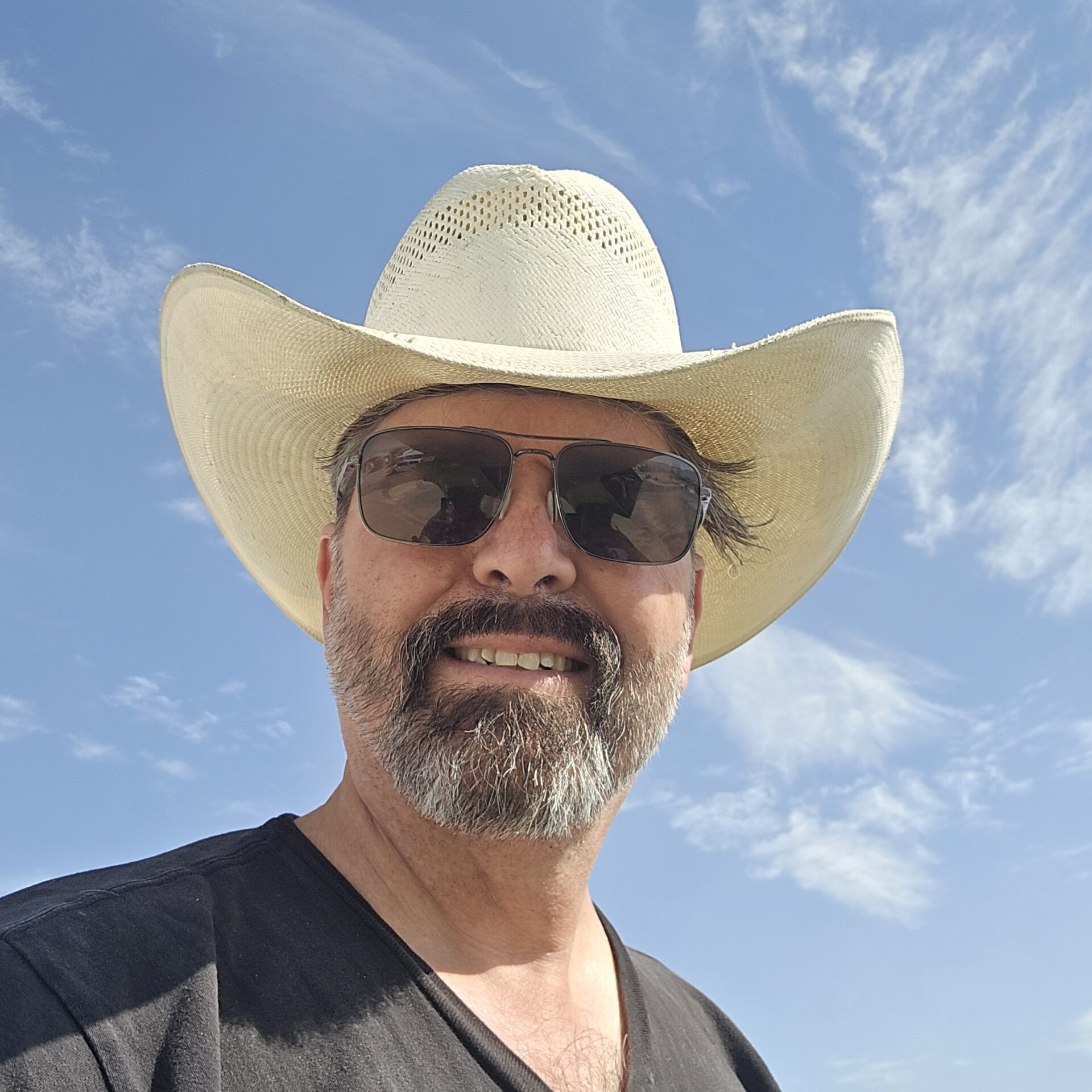 Jon Sarriugarte
Jon Sarriugarte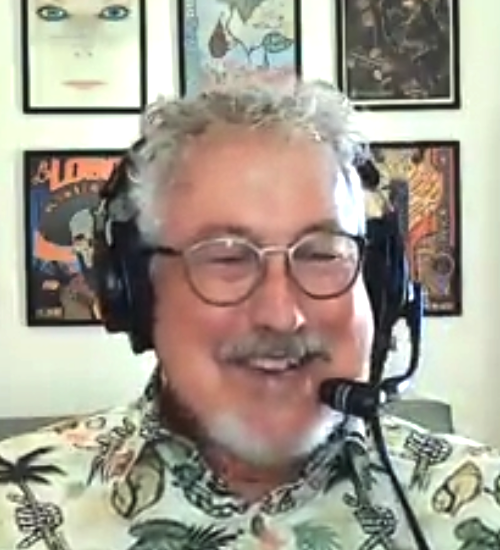 Stuart Mangrum
Stuart Mangrum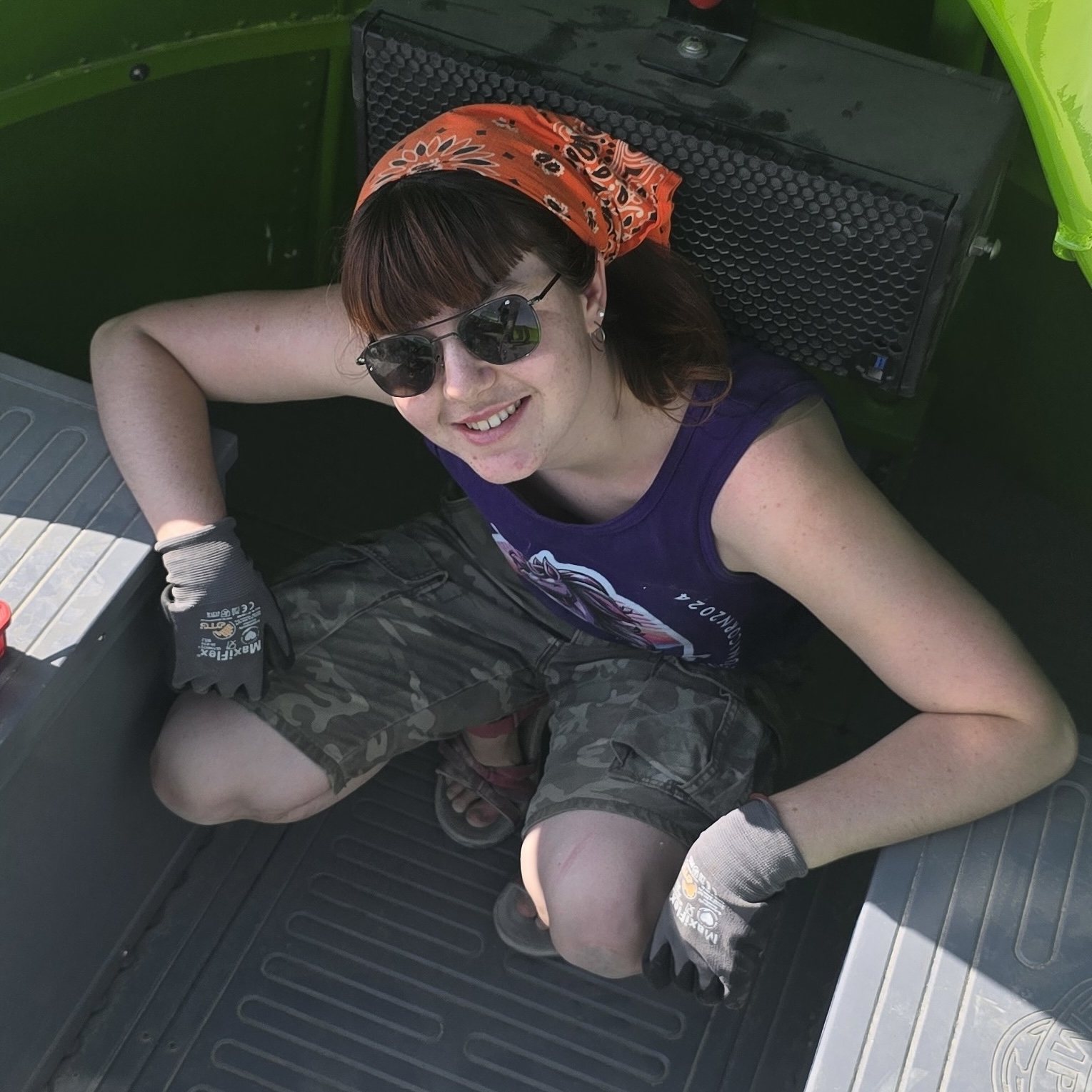 Zolie Sarriugarte
Zolie Sarriugarte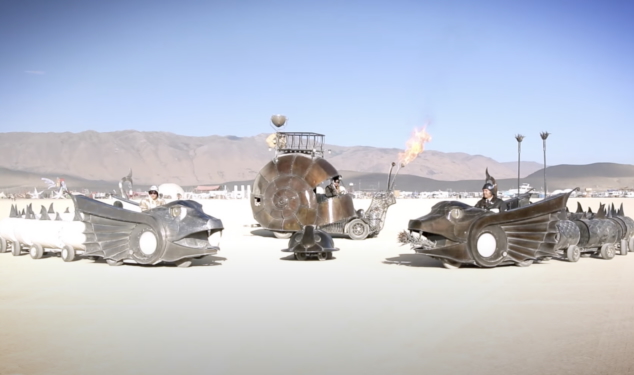 .
.
